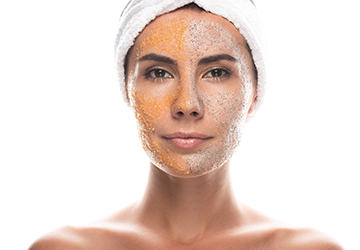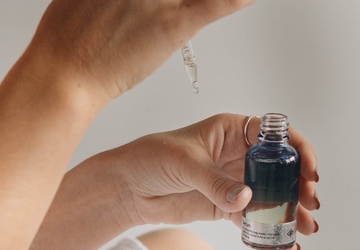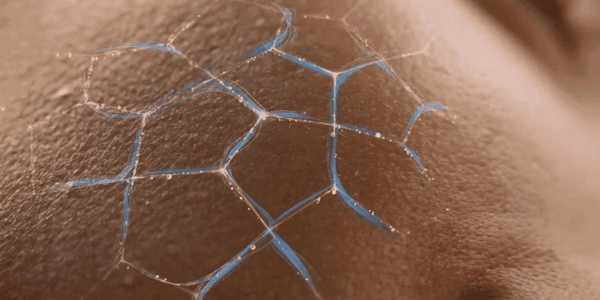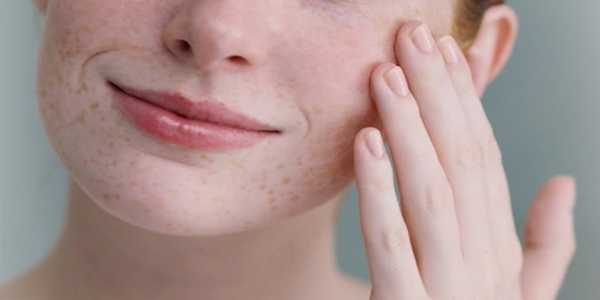The Ultimate Guide to Acne-Fighting Ingredients
Acne, a ubiquitous dermal malady, afflicts millions globally. Comprehending the best acne-fighting ingredients is imperative to discerning efficacious products that enhance integumentary health. The quintessential approach to skincare for acne-prone skin necessitates the integration of non-comedogenic emollients and sebostatic agents. This compendium delves into diverse ingredients to combat acne, elucidating their modus operandi and efficacy. Whether plagued by sporadic eruptions or chronic acne, this guide endeavours to assist in identifying the most potent skincare for acne-prone skin.
Salicylic Acid
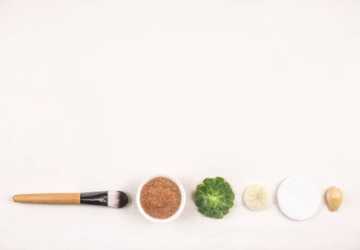
What is Salicylic Acid?
Salicylic acid, a beta hydroxy acid (BHA), is extensively utilized in dermatological formulations. Its notoriety stems from its ability to infiltrate sebaceous follicles and facilitate desquamation.
Benefits
- Exfoliates corneocytes: Assists in eliminating the stratum corneum, preventing follicular occlusion.
- Mitigates inflammation: Possesses anti-inflammatory properties that attenuate erythema and edema.
- Decongested pores: Penetrates deeply into the follicles to solubilize keratin and sebum.
How to Use
For skincare for acne-prone skin, employ products containing 0.5% to 2% salicylic acid. The application should be once or twice daily, contingent upon dermal tolerance.
Benzoyl Peroxide
What is Benzoyl Peroxide?
Benzoyl peroxide is an efficacious antimicrobial agent, particularly against Propionibacterium acnes.
Benefits
- Bactericidal: Annihilates the bacteria responsible for acne.
- Sebostatic: Curtail sebaceous gland activity.
- Keratolytic: Facilitates desquamation, preventing conidiogenesis.
How to Use
Initiate with a lower concentration (2.5%) and incrementally augment to 5% or 10% if necessary. Apply to a cleansed, arid dermis once or twice daily.
Retinoids
What are Retinoids?
Retinoids, derivatives of retinoic acid, are pivotal in acne therapy and ameliorating skin texture.
Benefits
- Enhances cellular turnover: Expedites the exfoliation of corneocytes.
- Prevents follicular hyperkeratosis: Inhibits the formation of new comedones.
- Diminishes inflammation: Reduces erythema and edema.
How to Use
Apply a minute amount to a cleansed, desiccated dermis once daily, preferably nocturnally. Commence with a lower potency and gradually escalate as tolerated.
Tea Tree Oil
What is Tea Tree Oil?
Tea tree oil, a natural essential oil, boasts potent antibacterial and anti-inflammatory properties.
Benefits
- Antimicrobial: Effective against acne-inducing bacteria.
- Anti-inflammatory: Alleviates erythema and edema.
- Natural alternative: A viable option for those seeking botanical ingredients to combat acne.
How to Use
Dilute tea tree oil with a carrier oil (e.g., jojoba oil) and apply to the affected areas once or twice daily.
Alpha Hydroxy Acids (AHAs)
What are AHAs?
Alpha hydroxy acids are hydrophilic acids derived from fruits and are employed in dermatology for their exfoliative properties.
Benefits
- Exfoliates epidermal cells: Removes corneocytes from the epidermis.
- Refines texture: Smooths the skin's surface.
- Enhances luminosity: Promotes a more uniform complexion.
How to Use
Utilize AHA products once or twice weekly, incrementally increasing frequency as tolerated. Apply nocturnally and always follow with photoprotection during the day.
Niacinamide
What is Niacinamide?
Niacinamide, a form of vitamin B3, offers multifaceted dermal benefits.
Benefits
- Anti-inflammatory: Calms acne and diminishes erythema.
- Sebostatic: Regulates excessive sebaceous secretion.
- Enhances barrier function: Fortifies the skin's protective barrier.
How to Use
Apply niacinamide serum once or twice daily. It can be concomitantly used with other acne-fighting ingredients sans irritation.
Sulfur
What is Sulfur?
Sulfur is a natural element known for its antimicrobial and keratolytic properties.
Benefits
- Antibacterial: Eradicates acne-inducing bacteria.
- Sebum-absorbing: Absorbs excess sebum from the dermis.
- Exfoliative: Promotes desquamation and decongests follicles.
How to Use
Utilize sulfur-based masks or spot treatments as needed. Commence with a lower concentration and escalate as tolerated.
Zinc
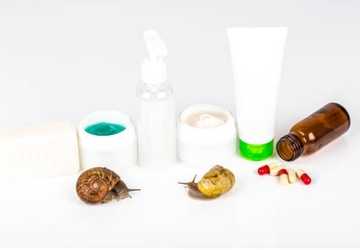
What is Zinc?
Zinc is a trace mineral integral to dermal health and reparative processes.
Benefits
- Anti-inflammatory: Alleviates erythema and edema associated with acne.
- Sebum-regulating: Modulates sebaceous secretion.
- Promotes healing: Expedites the reparative processes of acne lesions.
How to Use
Seek topical zinc products or contemplate zinc supplementation after consulting a healthcare provider.
Green Tea Extract
What is Green Tea Extract?
Green tea extract, derived from the foliaceous parts of Camellia sinensis, is venerated for its powerful catechins and antioxidative properties.
Benefits
- Rich in polyphenols: Encapsulates epigallocatechin gallate (EGCG), attenuating inflammation and mitigating oxidative stress.
- Anti-androgenic effects: Diminishes sebaceous gland activity.
- Antimicrobial properties: Curtails the proliferation of acne-inducing pathogens.
How to Use
Integrate green tea extract into your skincare routine via serums, emulsions, or tonics. Apply bi-daily to soothe and rejuvenate acne-vulnerable dermis.
Azelaic Acid
What is Azelaic Acid?
Azelaic acid is a dicarboxylic acid naturally extant in cereal grains such as barley, wheat, and rye.
Benefits
- Anti-inflammatory: Alleviates erythema and edematous conditions.
- Antibacterial: Combatants against Propionibacterium acnes.
- Keratinization regulation: Thwarts the accumulation of corneocytes, thereby preventing follicular occlusion.
How to Use
Employ azelaic acid formulations with concentrations between 15% to 20%. Administer to cleansed, arid skin once or twice diurnally.
Willow Bark Extract
What is Willow Bark Extract?
Willow bark extract is a phytogenic source of salicin, procured from the bark of Salix alba.
Benefits
- Natural exfoliant: Facilitates the desquamation of dead keratinocytes.
- Anti-inflammatory: Ameliorates dermal irritation.
- Astringent properties: Contracts pilosebaceous units and diminishes seborrhea.
How to Use
Incorporate willow bark extract into your regimen via cleansers or tonics. Utilize daily to sustain clear dermis.
Manuka Honey
What is Manuka Honey?
Manuka honey, indigenous to New Zealand, is produced by Apis mellifera pollinating the Leptospermum scoparium.
Benefits
- Antibacterial properties: Efficacious against Cutibacterium acnes.
- Anti-inflammatory: Mitigates edematous conditions and erythema.
- Emollient: Hydrates and soothes the dermis, promoting reparative processes.
How to Use
Apply a filmy stratum of Manuka honey to the affected areas or use it as a mask. Leave on for 20 minutes and rinse off with tepid water.
Beta Glucan
What is beta-glucan?
Beta-glucan is a polysaccharide from cereals, yeast, or fungi, renowned for its immunomodulatory properties.
Benefits
- Immunostimulatory: Fortifies the skin's innate immune responses.
- Hydrating: Confers profound moisture and soothes irritable dermis.
- Anti-inflammatory: Reduces erythematous conditions and pacifies acne-prone dermis.
How to Use
Incorporate beta glucan into your skincare regimen via serums or creams. Apply quotidianly for optimal results.
Witch Hazel
What is Witch Hazel?
Witch hazel is a photogenic astringent derived from the leaves and bark of Hamamelis virginiana.
Benefits
- Astringent properties: Contracts pilosebaceous units and modulates seborrhea.
- Anti-inflammatory: Ameliorates dermal irritation and diminishes erythema.
- Antimicrobial: Aids in the elimination of cutaneous pathogens.
How to Use
Apply witch hazel as a tonic post-cleansing. Use bi-daily to maintain a clear, equilibrated dermis.
Conclusion
Identifying the best acne-fighting ingredients is paramount for attaining clear and healthful skin. Incorporating these efficacious ingredients to combat acne into your skincare regimen can markedly enhance your skin's condition. Exercise patience and consistency, as noticeable results may take several weeks to manifest. You'll be en route to a clearer, more radiant complexion with the appropriate skincare for acne-prone skin.
